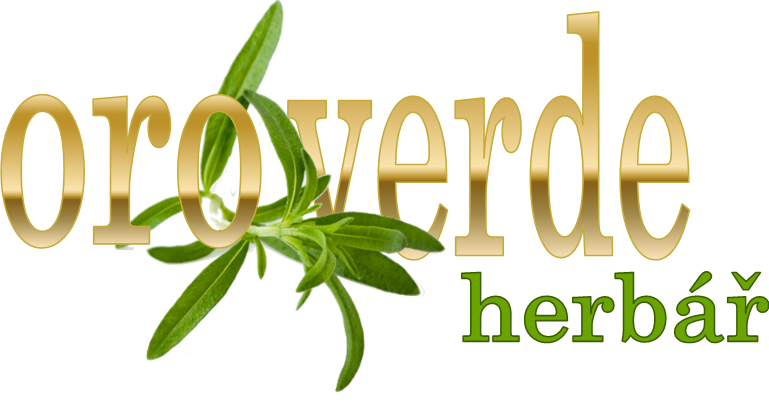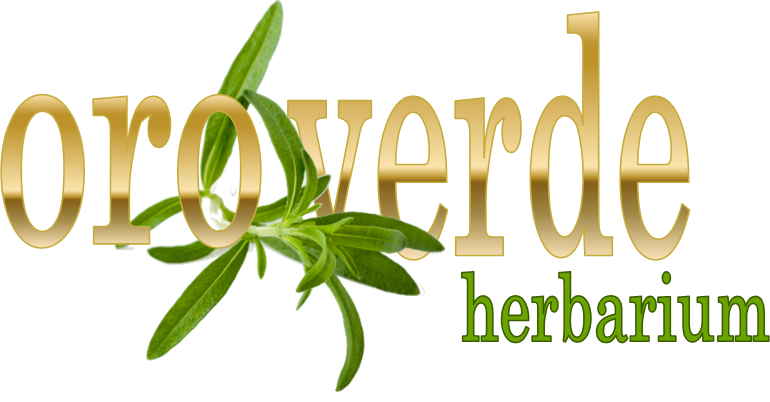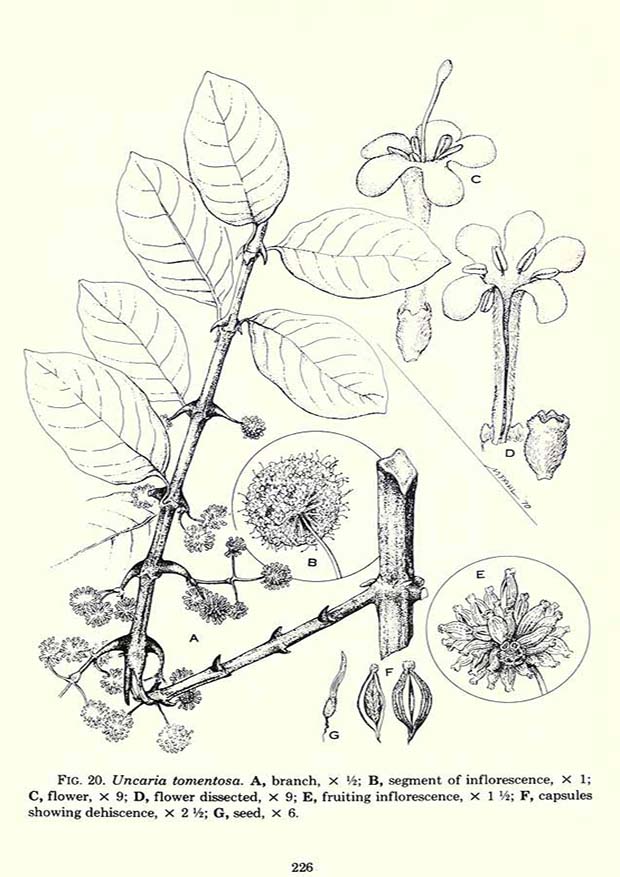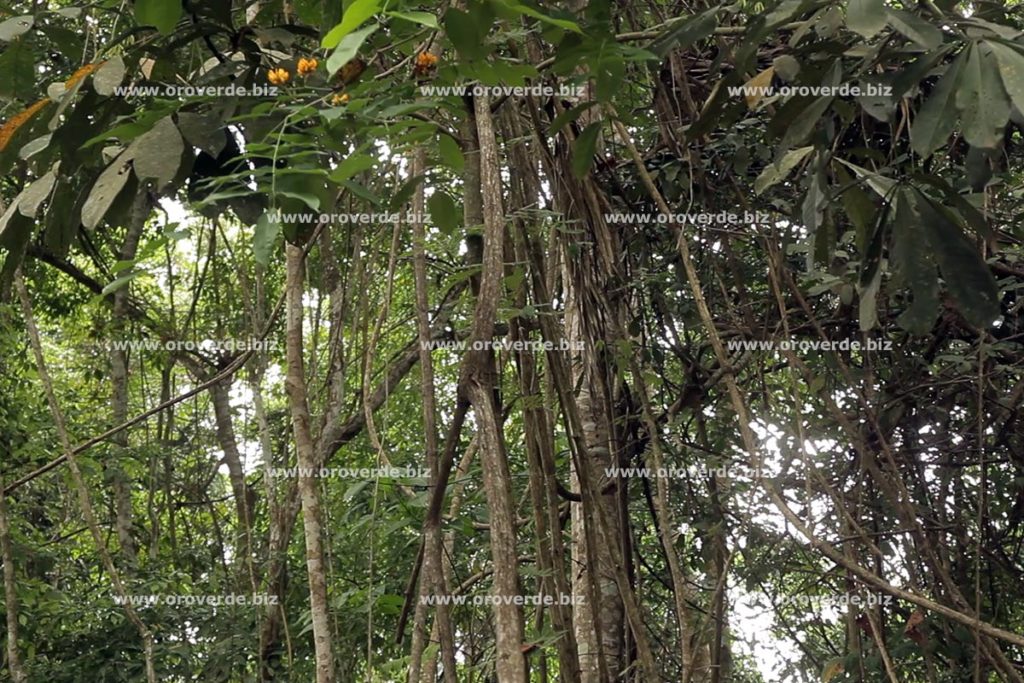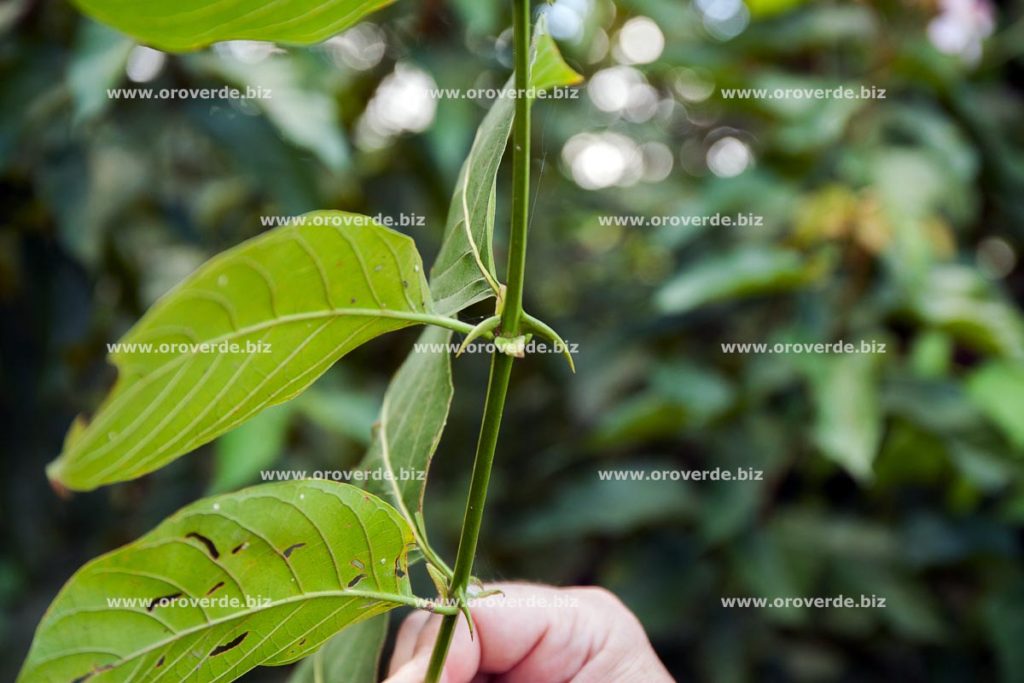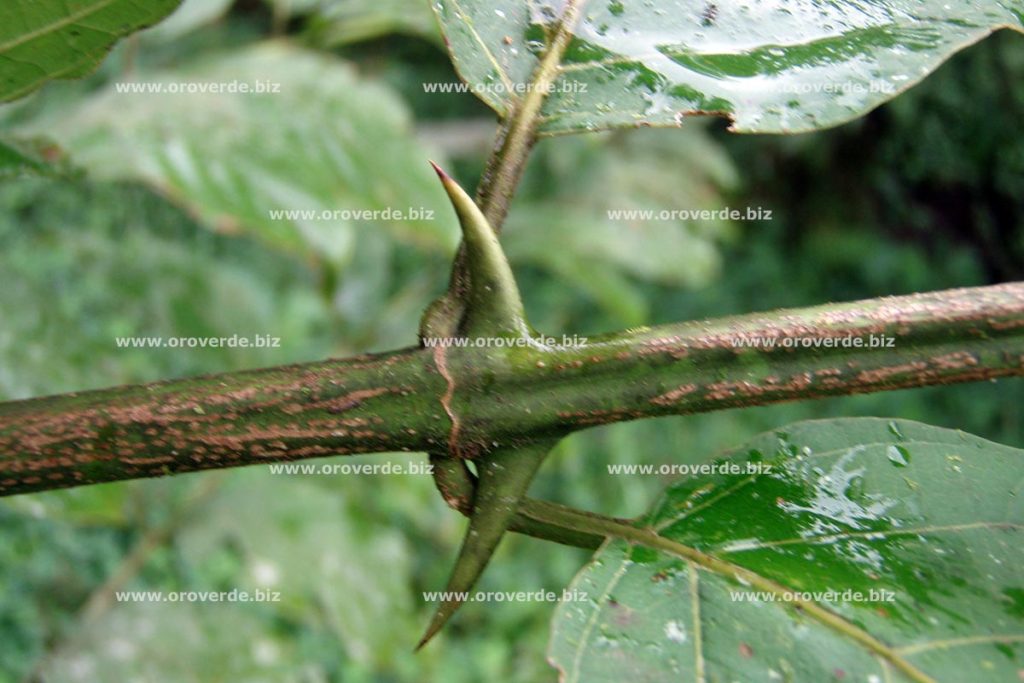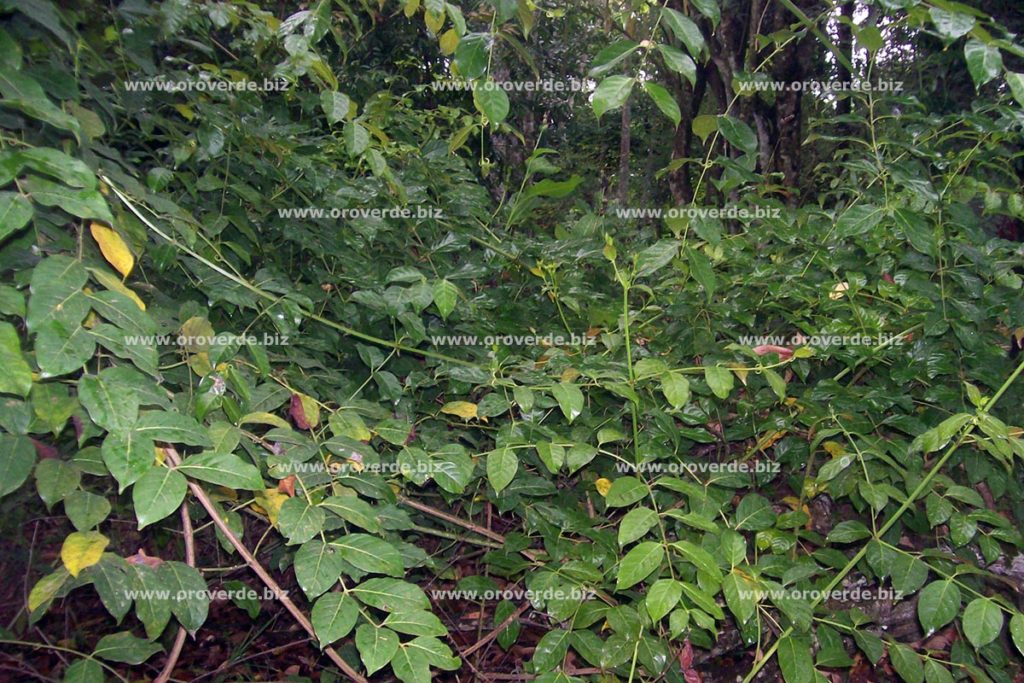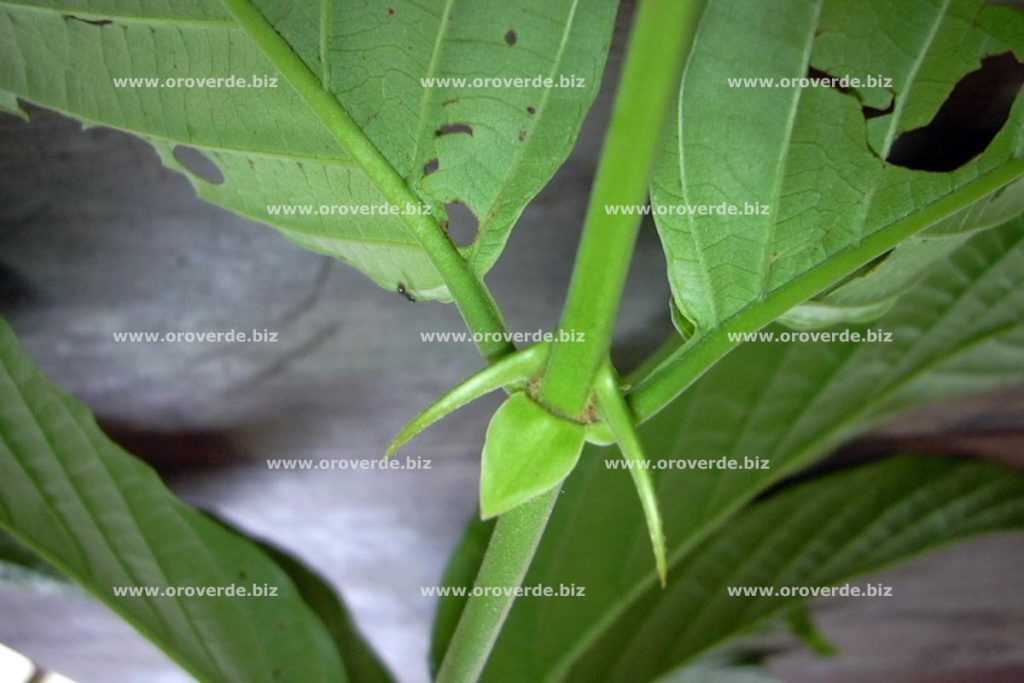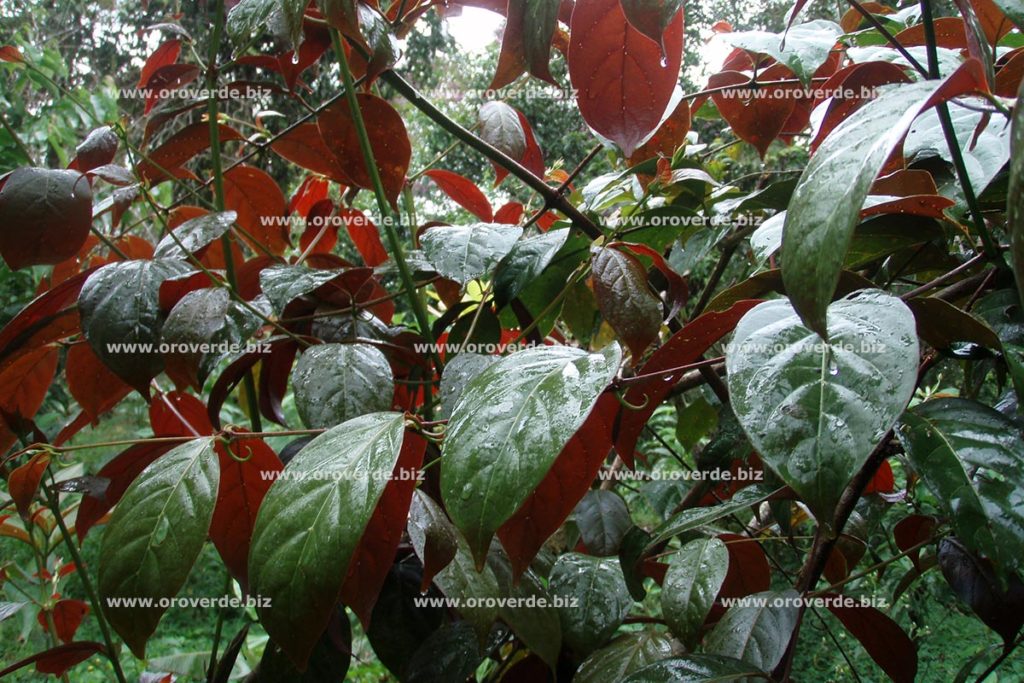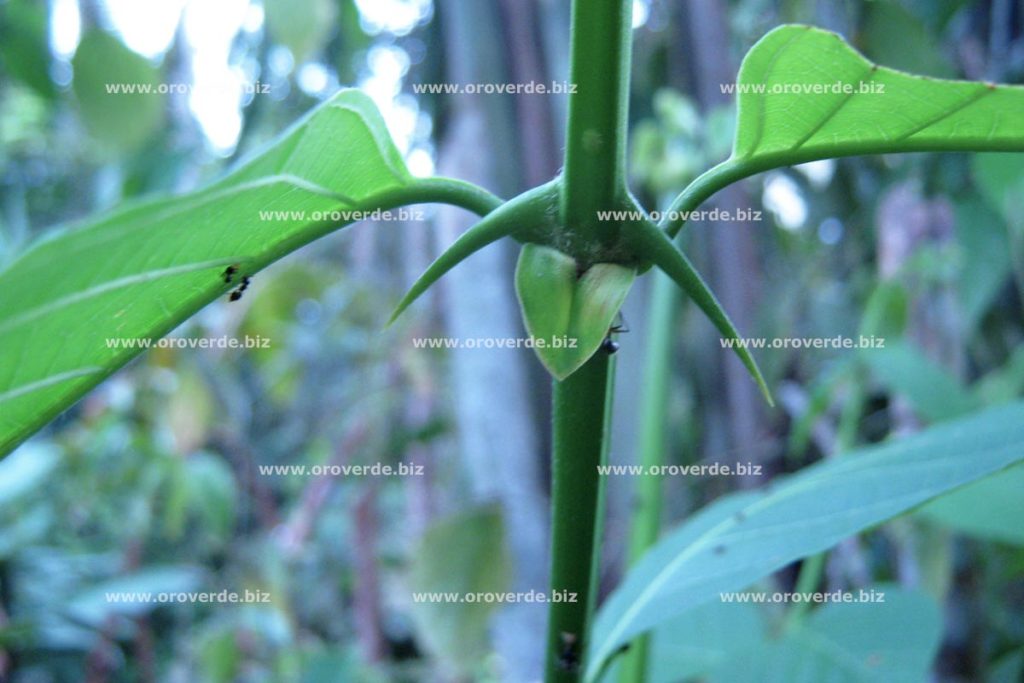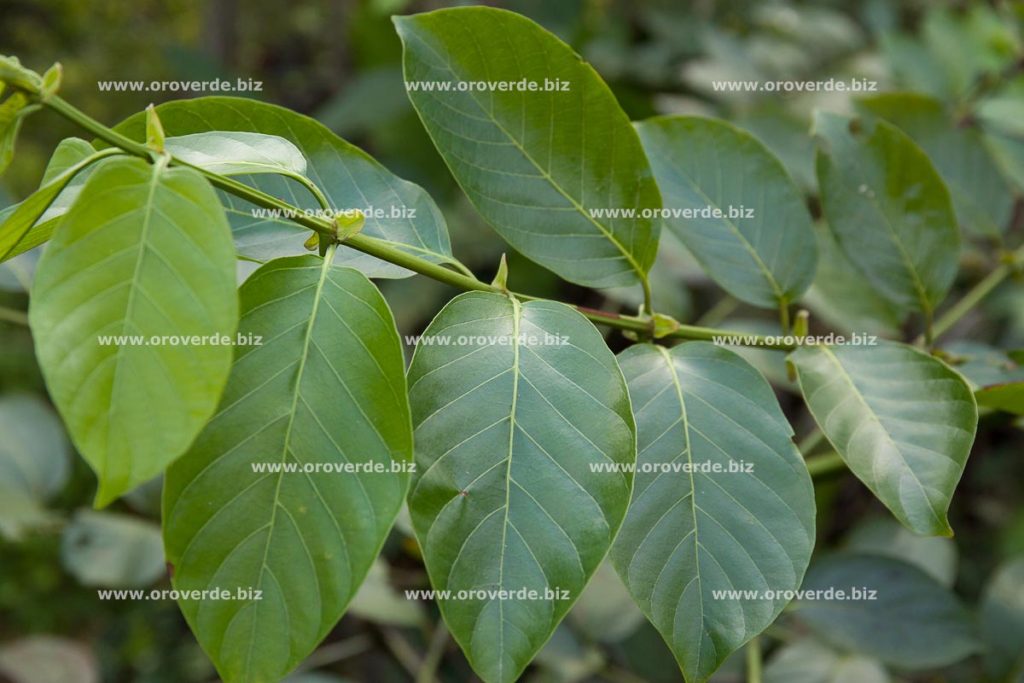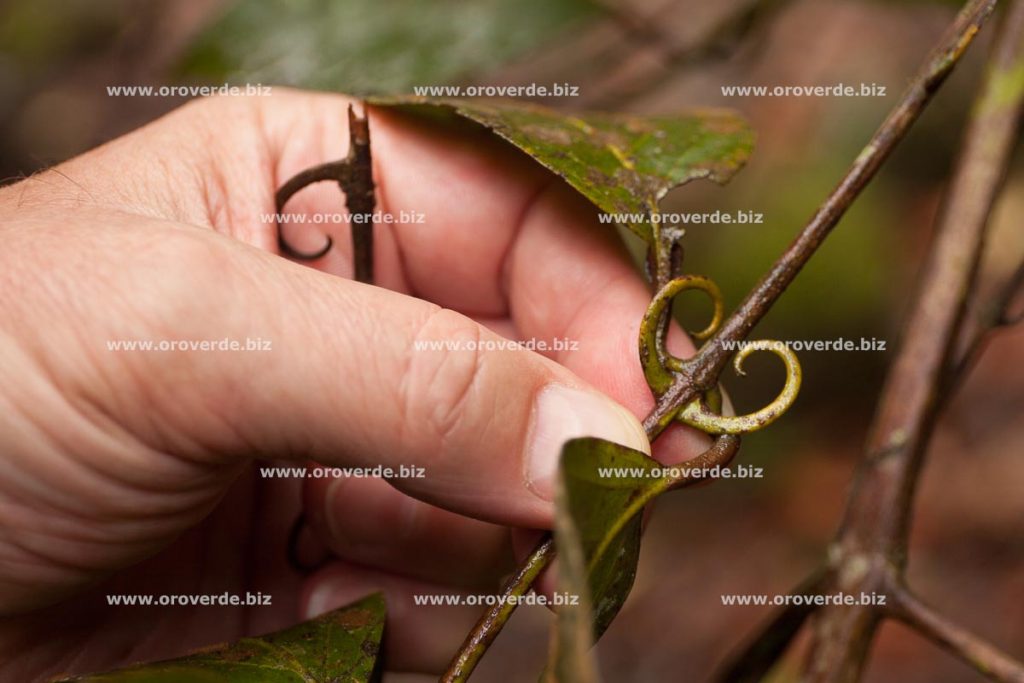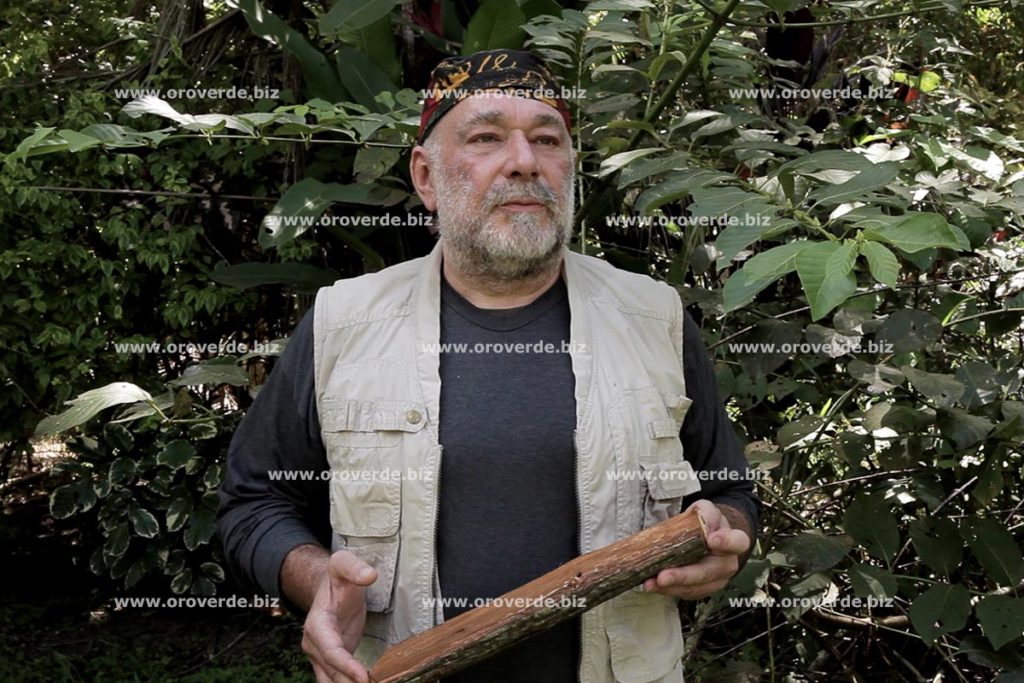It affects the following diseases:
Family: Rubiaceae (Bedstraw family)
Genus: Uncaria
Species: tomentosa Willdenow DeCandolle (ex Römmer&Schultess)
Common names:
see chapter description
Part(s) used:
see chapter description
Description:
To this plant we devote enough of our time because also many czech clients and patients could find out its rareness that is surely worth closer description.
Uňa de Gato is a liana growing in rainforest of Amazonia where it is used for thousand years by native indians in natural medicine. The effective part of the plant is among others the inside crust and bast . It contains an unique combination of chemical compounds (alcaloids) that are at the volume of their effect also very friendly to the whole organism. Uňa de Gato is used for treatment of inflammations, strokes, rheuma, gastrohelcoma, cancer and malignant tumours, to sthrengten immunity and healing of all diseases caused by parasites (common cold, mycosa, candidosa).
Uňa de Gato we can recommend as a preventive antioxidant, agent on immunity intensifying but also on solving concrete health problems. For preventive purgatory course is recommended three-months regular using and for solving of already created problems, the length of using depend on a conrete kind, usually it lasts 6 months and more.
Legend from the Ashaninks era
Indians in amazonian rainforest knew the local medicinal plants and their effects from time immemorial and they passed them from generation on generation in the form of legends. From many legends about Uňa de Gato is the most spread this one: “Once at night by the full moon and presence of Kashiri, the biggest god of Ashaninks, a hunter set up to look for some food for his family. After hours of not successfull hunt he started to loose his power. Suddenly he saw a big puma scraping at full power of its clutches, the crust of a tree and drink lymph that was flowing from the crust. Surprised by this, after the puma left, he came nearer to the tree that reminded of the steel puma´s clutches. As he was curious and for refreshment, he drank this lymph and fell asleep. After a deep dream he got up and set up again for a hunt. A big armadillo ran in to his way but he killed him immediately by arrow. Ashaninks did not consider it to be an accident but a proof of a magic, healing and revitalizing tree power of Uňa de Gato. Since then the indians have reverenced the liana and use it for various treatments. They also reverence puma because it was something through what the god Kashiri gave them the knowledge of Uňa de Gato. They still are afraid of it but do not hunt it anymore, not to make the god angry, afraid that he could leave them wane with hunger and various diseases.”
The research results fascinate
“Since the chinin was discovered, no another plant attracted so much the specialists from the world of science.” The „magic liana” was introduced to modern world by the austrian scientist Klaus Keplinger who heared about don Luise recovery, eighty-years old settler from Peru by the infusion from Uňa de Gato. He was incurable by gout and lungs cancer. One of his sons did not make it up with his father destiny and looked for a help of an indian medicine-man who was giving to his father drink 2 litres of the liana infusion every day. After a half-year using was his father healthy and in full condition he lived until his ninety years. Keplinger initiated in the end of 70-tieth years of the last century serious researches of the liana and between 1979 – 1984 registred in the USA three patents on healing components izolation.
In May 1994 was in Geneva, under the auspices of World Healthy Organisation (WHO) the first international conference on the topic: Uncarie tomentosa. The participants expressed that the spectrum of diseases on which the substances in U. tomentoa work is unusual wide and by the fact that it very effectively works on the immune system (increase immunity almost about 60%) can help at many diseases. The scientific researches unambiguously confirmed its ability to suppress inflammations, brake tumours growth, suppresst infections and common cold. Information from individual clinics and medicial stations unambiguously prove its extract´s positive effect from this plant on the process of diseases also on their treatment.
From papers we cite among others Journal of Natural Product, from which it results that the researches organized by Dr. Aquino from the University in Neapol confirmed the ability of Uncaria tomentosa, to be concrete of some its substances, to moderate inflammatory states about 46 – 69% (at tests in vivo and also in vitro), This group of chemical substances prove also anti-viral characteristics. Sandoval and coll. published in 1997 the reseraches results that were realized at School of Medicine at the University in Louisiana, which prove high anti-oxidative effect. Klinar and coll. in 2000 publishes the comparison of antioxydative effect of U. tomentosa and vitamin C. The results unambiguously show the activity of U. tomentosa to be 3,18 times higher than at vitamin C. Scientists further proved the healing effect at lowering hypertension, prevent liquids retention, restrict inflammations birth, tumours diffusion prevention and viral diseases surpassing. Doctors notices the results at candidosa treatment, parasital infections, inflammatory intestinal diseases and also chronic digestive problems. More notable are the news in connection with cancer and cardiovascular diseases. U. tomentosa shows the strong antihypertesion effects, prevent from blood platelet accumulation an has strong antimutagenous characteristics. Mailaender study (SRN) can be one of the proofs. At hundred of active smokers were proved the presence of mutagenous substances in urine that cause the cancer birth in organism. Quite a short time after U. tomentosa using was their presence in urine strongly reduced and then totally vanished.
Uňa de Gato composition
Positive healing effects about which prove most studies and treated patients, are imputed to many indological and oxindological alcaloids . To them belongs the immunologically most active izopteropodin and rhyncophyllin (ryncofylin) with the ability to block blood platelet accumulation and thrombs, then hirsutin and mitraphyllin, markedly supporting proliferation of lymfocytes including important support of phagocytosa. U. tomentosa supports the ability of body to fight against infectious diseases, bacterias and virus. Except these alcaloids, scientists izolated several polyfenols triteripens, plant steroides beta sitosterol, stigmasterol and campasterol. These substances help to explain various positive effects of Una de gato, the patients talk about. In the Institute of immunology Niwa in Kochi-ken in Japan were in the liana crust discovered five procyanides. They are by-water soluble flavonides with anti-inflamatory effects.
Opinions of specialists
Our company asked several eminent specialists with who we cooperate for the opinions on the plant and our product.
Eminent pharmacobotanist Prof. RNDr. Luděk Jahodář, CSc. describes the plant:
“Hydrogum of root crust of U. tomentosa is a traditional peruvian healing agent. It is used as an antiflogisticum, contraceptivum and cytostaticum, antirheumaticum and for the therapy of stomach ulcer disease. The kind U. guaianensis for cut healing and inflammations, GIT. Immunostimulative effect is imputed to pentacyklic oxindolalcaloids (in vitro stimulating the endothel cells of interleucin-1 and interleucin-6 in alveolar macrofages), tetracyclic oxindolalcaloids effect on CNS and are antagonists of pentacyclic oxindolalcaloids effect.”
Cancerologist MUDr. Holeyšovský from Prague says:
“Priority is the effect stimulating specific anti-tumor immunity without side-effects. Specificity of the mechanism is the effect most evident at tumor diseases of GIT, intestines and lungs. It is also significant in prevention.”
MUDr. Pavel Špatenka who has been using for several years amazonian plants says:
“Uncaria tomentosa activates self-healing mechanisms so effectively that it brings into the therapy faith where solid scientific data does not exist. As it puts together belief with science, it shows a new modern way of natural medicine and becomes an example of a very effective and purely natural treatment without side-effects on organism, as in the treatment so in diseases prevention.”
Orthopeadist Dr.med. Jiří Půlpán who acted eight years at University clinic in Heidelberg says:
“Versatility of healing and preventive usage of U. tomentosa opens new possibilities of treatment by natural preparates. Thanks to slight effect without side-effects is its place in nowadays medicine undiscussible.”
Dr. med. Reinhardt Szimonisz working in SRN have been using for many years the amazonian plants especially for treatment of inflammatory and tumor diseases of genito-urinary organs. He values our product:
“Very effective concentrate in tablets of Uňa de Gato tabs + if it does not persuade, then it fully come up to the form of infusions that I have been applying for a long time to my patients. Results of the applying are comparable with other treatment methods, a visible advantage is that it effects without side-effects, burdening organism.”
Variety of names of Uncaria Tomentosa
In our countries it is also known as Villcaccora thanks to the popularization by polish missionary -father Egmund Szeliga. In native language of indians quechua it means „sacred plant”. The shoots reach up to several tens of metres. They grow slowly and during twenty years they grow up to their full height. At the crop is nowadays picked just the crust, not to damege the roots and secure further plant multiplication. The peruvian government, as the result of a big demand on the magic medicine, legalized the terms and quantity of crop to prevent from this plant stocks exhaustion. Nowadays, after the regulation of mining is from the forest obtained about 300 000 kilos per year. Nowadays is U. tomentosa grown by original peruvian Indians on the plantations under the auspices of world pharmaceutical concerns. This should prevent from disturbance the balance of rainforest at still rising demand on this plant.
Using of plant
The scale of using is really wide: from anti-inflammatory and anti-microbial in general, over adaptogenne up to anti-mutagenic (so anti-cancerous). The results of clinical studies confirm effective using at prevention and treatment of – acne, herpes, allergy, asthma, problems of gastrointestinal tract of the kind Crohn disease, gastric ulcers, gastritis, bowels diseases, candidoza, diabetes, hypoglycaemia, prostate inflammtion, arthritis, arthral pouch inflammation, fibromyalgia, problems of menstrual cycle and climacterical, hypertense, on reparation of imbalance in small intestine where it helps by renewal of profitable bacterias. Of diseases of circulatory systém and also cancerous tumours. The most often is used for overall immunity boost. It is even so effective that helps as an promotive agent at AIDS treatment. Its healing effects are really multilateral. What is important is that they are very friendly to human organism. The healer Jiří Janča writes:” A lot of world scientists realize the wrong trend of world health development. In general it means by constatation that the more scientific progressin medicine the less physiological it is.”
For its anti-mutagenne activity it is recommend to smokers in prevention against tumor diseases birth.
Here you can find out more information on the pages about standard preparations of herbs.
Concrete treatment examples – Two patients stories:
Elsia (58 years, Netherland) was diagnosed ovary and hystera cancer. The doctors refused surgery and decided for chemotherapy. Elsia had 3 more months to live. She got in touch with a doctor from Amsterdam who deals with alternative cancer treatment. In November 1994 they started treatment on injections 714X and Essiac tea. In February 1995 Elsia had a new examination. Her state got a little bit better but the tumor did not become smaller. They stopped the treatment on injections 714X and began with SOD (antioxidative enzyme). O improvement. In april 1995 they started to dose tablets of U. tomentosa (9 tablets, 350 mg daily – three tablets 30 minutes after every meal). In the end of may 1995 her blood picture got much better. In July 1995 she continued with the combination of Uncaria and Essiaca. Year after the doctors said she had not more that 3 months to live, she came back to normal life.
Julia (11 years, Netherland) turned sick with bad kolitis, was on antibiotics and prednison but did not react on the treatment. Under the control of doctor she started to take U. tomentosa. Doctor recommended 2 tablets, 350mg twice a day after meal. At the beginning of august was Julia without antibiotics and prednison. She felt much better but the disease was still there. So she continued in the treatment by Uncaria and in october she was alright. Examination in hospital did not confirm colitis. Though the doctor prescribed the maintainance treatment for another half a year. Julia´s story shows how good can be a friendly treatment with herbs in comparison with artificial medicamentes that have often side-effects.
Science and reseach
1. Taxonomic and systematic clasification (Obregon / Pe)
Division: XXVII
Phylum: Spermatophyta (Magnoliophyta)
Subphylum: Magnoliophytina
Class: Dicotiledonae
Class subdivision: Metaclamideas
Sort: Gentianales
Sort subdivision:
Section: Rubiaceae
Line: Uncaria
Kind: tomentosa (Willdenow ex Roemer & Schultes) de Candolle
2. Names, national names
2.1 Latin synonyms:
Nauclea acuelata HBK (Nov. Gen. & Sp. 3; 382, no Wolld, 1797)
Nauclea tomentosa Willd. Ex. R. & S. * (Syst. Veg. 5; 221, 1819)
Ourouparia tomentosa ( Willd. Ex. R. & S.) Schumm. (Mart Fl.Bras. 6, pt.6; 132, 1889)
2.2. Usual names:
Cat´s claw (english), Uňa de gato (spanish), Katzenkralle, Krallendorn (german), Vilcacora a.m.o..
3. Botanical description
3.1. Plant
Charakterized Obregon 1994 and Silva and col. 1997 as a creeping bush (liana), reaching the height of 20 metres. The log and branches are four-angles nearer to apex, with crooked massive ligneous pikes, tortile down, unpent.
3.2. Leaves
Leaves have short stems up to the height of 1,5 cm, blades of a memranos consistence ( grained ), of a round / oval shape with the length 7 – 9 cm., wide 4,3 – 9 cm, the top side of green-yellowy colour, opaque, the bottom side is fair-green, where we can see slight floss from where the name „tomentosa” comes.
3.3. Inflorescence
Inflorescence with the length up to 9 cm, small grapes into 5 caps, stems (stalks) length 1 – 3,5 cm. And average of 0,8 – 3mm. Average of the cap between 1,5 – 2 cm. Floweres are of a yellowy white colour, crown of funnelled shape, about 5 mm long, 0,6 mm average. Rods 1,1 – 1,5 mm long, ovulum is round, linear style about 4,5 – 6 mm long.
3.4. Fruitdiatomic, necked oval up to about 0,9 mm long. Seeds slim, oblong up to 4 mm long, weight 8 – 10.000.000 up to kilo.
4. Occurrence and characteristics of biotype
4.1.American continent
Belize (British Honduras), Brasil, Bolivia, Colombia (Chocó a Amazonie) Costa Rica, Ecuador, Guatemala, Guyanas, Honduras, Nicaragua, Panamá (Bocas de Toro, Valle del río Gatún), Paraguay, Peru, Surinam, Trinidad, Venezuela.
4.2. Peru
Ayacucho, Junín, Pasco, Ucayali, San Martín, Madre de Dios, Cuzco
4.3. Biotypes
Humid tropical forest lowland (bh – T), very humid tropical forest lowland (bmh – T), Humid tropical forest foothills (bh – PT), very Humid tropical forest foothills (bmh – PT), humid subtropical forest lowland (bh – S) and in meets of the following types (bh – S / bh – T) and (bmh – PT / bh – T).
4.4. Physiography
Flores y Quevedo citated by Pinedo (2000) mentions the most frequent occurrence in the areas of planes, on the surface curly, humid even wet and badly dehydrated.
4.5. Soil
Flores (1995) mentions clayey, loam, badly dehydrated soils (characterized as soils of the type “Gleysols”) or well-dehydrated (soils of the type Cambisols) according to the classification FAO. Pinedo (1997) says that this one prospers in flooded / deluge soils as in these well-dehydrated. Then he talks about significant swing to cleared soils, and development in the soils of a limy type.
4.6.Clime
Zavala (1996) mentions preference of plants in clime with the average minimal annual temperature 18,5°C , maximal 27,7°C with annual average of rainfall minimal 2000 mm, max. 6000 mm., Pinedo (1997) then mentions other conditions, rainfall intensity 1500 – 3200 mm, average annual temperature 25 – 27°C. Lombardi (1999) mentions the following conditions: average annual temperature 17 – 25,7°C, average annual rainfall 1200 – 6000 mm.
4.7. Natural associations
It naturally occures with various kinds according to Piňáno and Flores (1995) the most Cetropia spp., Vismia spp., Ficus spp., Heliocarpus popayanensis, Ochroma piramidale, Vernonia spp., Inga spp., and Hymanthanus sucuuba. Zavala (1996) mentions the associations with Omosia spp., Simaroura amara, Chorisia spp., Geoffroea spp., Terminalia spp., Iranthera spp., Jacaranda spp., Cedrela odorata, Swietenia macrophylla, Terminalia tarapotensia, Cedrelinga catenaeformis, Calycophyllum spruceanum, Porteria spp. A Quararibea spp.
4.8. Phenology
Quevedo (1995) mentions from the region Ucayal the flower in october, november, the fruit in december – january and the seeds in februrary – march. Pinedo (1997) mentions from the region San Martín the beginning of the flower in may, the fruit in october – November and the spore of seeds in december – january.
4.9. Cultivation
Barriga (2000) presents “Plan de manejo forestal” realized by native indians of the tribe Shipi – Conibo in the locality Vista Alegre de Iparia. He mentions the count of 72 – 151 lianas / hectare from which only 42% is the average of the trunk above 6cm, which is the minimum for the liana collection. From these he mentions the decree 862 kg / ha. Nowadays is farmed about 90 ha from the whole 4730 ha approved.
5. Ethnobotany
Urrunaga (1994) includes it as a quality plant between existing used ones. In traditional medicine of the area Andean – amazonian. Peruvian native tribes using it: Boras – northern selva, Campas, Ashaninkas, Amueshas – middle selva, Machinguengas – southern selva use it on treatment of arthritis, rheuma, all kinds of inflammatory processes, anti-cancer and especially on urogenital women tract, gastritis, cirrhosis and gonorrhoea. Also used latex – lymph of a orange-red colour, flowing out of the middle bunch of radial trunk cut, for the treatment of renal problems.
Duke (1994) mentions the using of boiled crust (infusion) by the tribe Piura as an anti-inflammatory, antirheumatic and anticonceptive agens, also used for treatment of gastric ulcers and tumors.
Obregon (1994,1997) confirms the folloing using in traditional peruvian medicine: inflammatory processes of various origins producing signilogiy or symptoms in organs or systems: arthritis (without any other classification), gastritis (of various aetiology), skin and urogenital tract inflammations, asthma, gatric ulcers,diabetes, degenerative diseases: cancer (the most often of urogenital women tract, bronchopulmonar, stomach, tumors, common colds (without specification), disorder of menstrual period, convalescence and overall weakening, gonorrhea. In traditional medicine of Guyana – native tribe del rio Appaporis use the infusion on the treatment of dysenteria.Lopéz (1996) realized research of the market in the quarter Belén, city Iquitos (Perú) – sale of traditional healing plants by natives with the following result. From 25 sellers agreed with the revision 20 from who 14 declared selling Uňa de gato. From this number 71,14% sell only uncaria tomentosa, 14,29% only uncaria guianensis and 14,5% both types. Sellers on the market recommend for the following using: cancer, problems with prostate, ulcers, reins, liver problems, diabetes, muscles pains, overall physical gain, diseases prevention, AIDS, rheuma, internal infections, inflammations, all kinds of diseases, blood clarification, bronchitis, throat pain and rhonchus, as a diureticum and at TBC. In general the best using is mentioned for liver problems 12,76%; body boost 10,63% and cancer 10,63 from the overall complex of 48 data. 7,14% sellers exludes the using in combination with other plants and 92,85% recommend combinations with other kinds, the most often: bulb Dracontium lorentse, root Euterpe oleracea, latex Sangre Drago, oil Ungurahui, crust Huacapurana, crust Maytenus macrocarpa, crust Cumaceby, with any other crust, with Ephedra americana (peruviana), leaves Plantago mayor, leaves Malachra alceifolia, latex Ficus spp., crust Spondias mombin, cordial from 7 crusts.
The most often it is combinated with Maytenus macrocarpa, 12,5%, Euterpe oleracea, Dracontium loretense and every type of crust 10%. Lopéz and Llerena (1996) controlled under the caption of Institut for research of peruvian Amazonia 100 sellers with the following results: 78% sellers do not know what kind is served, 17 percent prefer U. tomentosa and 5% other kinds. From that who consume U. tomentosa 65% consider it to be very effective and 35% because it was begun with this kind. The most often they use it for treatment of reins 14%, gasthritis 14%, artritis 10%, diabetes 7%, for overall reconstruction and prevetion 7%.
47% confirms that they knew the positive effect of U. tomentosa, from who 55% on their own organism, 22% on patients, 13% on friends and 10% from medicinal information sources.
Patients diseases who mention the knowledge on own organism were: prostate 30%, rheuma 20%, inflammatory processes 15%, reins problems 15%, diabetes 10, hernie 7%, memory loss 3%. 5% respondents mention the knowledge of negative side-effects: on reins 45%, increasing of arterial pressure 35%, others 25%. 18% use u. tomentosa in combination with other plants, the most often with MALVA (Malachra alceifolia) 35%, LLANTEN (Plantago mayor) 30%, ŇUNCO PICHANA 20%, LINAZA 10% a CEBADA 10%.Liquid coming from raw root – radial cut – is used in peruvian Amazonia for drought and hunger singing away and against crack-off. Inhabitants of the city Iquitos (3 mil. inhabit.) use it as: aphrodisiacum, against alergies (leaves), against overall weakness, as anticonceptive, at diabetes, gastritis, cirhosa and gonorhea. Internal parts of the roots are after the crust and bass deprival used for contructions buildings.
6. Chemistry and phytochemistry
In Peru as in abroad were realized researches in laboratories and universities with variouparts of the plant. Now are registred 3 patents of the following numbers: No.: 4844901 from 7/1989; No.: 4940725 from 7/2000 and No.: 5302611 z 4/1994, proposed to registration in the USA by the austrian scientist Klaus Keplinger and col. in the connection with izolation of alcaloids from the U. tomentosa root that positively stimulate the immune system. Some of these scientists realized also research of determination of secondary metabolites in the connection with a part of the plant.
6.1. Root – alcaloids
Isopteropodin or Uncarin E, Pteropodin or Uncarin C, Mitrafilin, Isomitrafilin or Ajmalicinoxindol A, Uncarin F, Rinkofilin or Mitrinermin, Isorinkofilin, Especiofilin or Uncarin D, Gelsemin.
6.2. Trunk / crust
6.2.1 Alcaloids: Rinkofilin, Isorinkofilin, Mitrafilin,Dihydrokorinantein, Uncarin F, Hirsutein, Hirsutin.
6.2.2 Triterpens: 3beta – 6beta, 19alfa trihydroxiura – 12 – 28á acid, 3beta – 6beta, 19alfa trihydroxi – 23 oxi – ura – 12 – 28 acid, 23 – nor – 24 esomethylen – 3beta, 6beta, 19alfa – trihydroxi – 12 – 28–á acid; 3beta – 6beta – 19alfa – trihydroxiura – 12 – 23, 28 – dimethylat.
6.2.3 Glycosides: Acid quinovic – 3beta – O – beta – D – glukopyranosil – 1 – 3 – beta – D – fucopyranosid, – 3beta – O – beta – D – glukopyranosil – 1 – 3 – D – fucopyranosil (27 – 1) – beta–D–glucopyranosilester,
- 3beta – O – beta – D – glucopyranososil – 1 – 3 – beta – D – fucopyranosil – (28 – 1) – beta – D – glucopyranosilester,
- 3beta – O – (beta – D – quinopyranosil) – (27 – 1) – beta – D – glucopyranosilester
- 3beta – O – (beta – D – fucopyranosil) – (27 – 1) – beta – D – glucopyranosilester
- 3beta – O – (beta – D – quinovopyranosil) – (28 – 1) – beta – D – glucopyranosilester (28 – 1) –- (beta – D – glucopyranosil) – beta – D – glucopyranosilester
6.2.4. Polyfenols: Epicatechin, Procyanidin (A, B1, B2, B4)
6.3. Leaves
6.3.1. Alkaloids: Rincofilin, Isorincofilin as the major alcaloids together with their nitrates, Mitrafilin, nitrates Dihydrocorinanteinu, Isomitrafilin and its nitrates, Uncarin F, Hirsutein, Hirsutin; as minor: 9 – hydroxi oxindol isorotundifolin and rotundifolin.
6.3.2. Sterols: beta – sitosterol, stigmasterol, sitosterol, campesterol
6.3.3. Others: Proantocyanidines, Polyfenols, triterpens, acid olean, acid urson.
6.4. Alcaloids Quantification
Reinhardt (1997) analyzes alcaloids from various parts of the plant with the following results: – fresh leaves: 3 – 4% (acuamigin 30%, uncarin F 30%, speciofilin 15%, pteropodin 10%, isopteropodin 10%, tetrahydroalstoni 5%); leaves not fresh and dried: 2% (specifilin 45%, pteropodin 30%, isopteropodin 15%, unkarin F 10%); kůra: 0,5% (pteropodin 40%, speciofilin 30%, mitrafilin 10%, unkarin F 10%, isopteropodin 10%); kořen: 1,2% (mitrafilin 25%, pteropodin 25%, speciofilin 20%, uncarin F 10%, isopteropodin 10%).
Pérez (1999) in his docent work in “Laboratories of chemistry of natural products Gabriel de la Fuentes of the chemistry faculty in national university in Iquitos used classic methods on determination of alcaloids, brutto from the crust in the relation to the trunk average with the result: The biggest quantity of alcaloids is situated in the trunks of 5 cm with 0,1344% in relation to the average of 3 cm (0,0236%) and 0,0724% to the rate of 7 cm. Also the results of chromatography confirm it on a thin layer where the average of 5 cm presents 0,6% of alcaloids in the comparison with 0,5% average of 7 cm, resp. 0,3% average of 3 cm.
Zuňiga and col. (2000) published results obtained from the oxindoalcaloids analysis in plants that are culturally grown on open plains near cities or towns (Pucallpa – 154 m. above sea and Tingo María – 600 m.above sea level) with the following results: leaves of u. tomentosa: 1,24% and leaves of u. guianensis 0,24% (pucallpa) and leaves of u. tomentosa 1,59 (Tingo María) , flowers 2,10% – first published data, leaves 1,59%, crust 0,50%, branches with pricks 0,32%. Extract from leaves of u. tomentosa contained 4,20% of alcaloids as a whole.
7. Biological tests
7.1. Antibacteriological activities
Blais (1992) realized comparing test with water liofiliated extracts (when warm and cold condition) from 1. U. tomentosa mixed with Allium sativum (Perú production) and 2. Allium sativum solo (Canada production) for determination of inhibition of bacterias colonies development – including human pathogenic also non – pathogenic. Extract containing u. tomentosa showed significantly the inhibition of bacterial cultures growth, namely non-pathogenic Eschericha coli and Listeria innocua, Listeria monocytogenes and pathogenic Sallmonella typhimurium – inhibition about 50%! whilst the extract from Allium sativum did not inhibited the bacterial colonies growth. By this was proved antibacterial characteristic of mixtures with u. tomentosa but it was not determined whether this activity eliminates one of the fractions or bacterias as a whole, but from the results it is clear that the extract just significantly lowers the jednu z frakcí nebo bacterial cultures growth without killing them. Enciso (1995) used methods Bioensayo in vivo on two bacterial tribes of Staphylococcus aureus. Results show 68% antibacterial activity of liofilized extract and 56% activity of simple infusion on the basis of measuring the secret in throat.
7.2.Antimycotic activity
Silva and col. (1998) determines the antimycotic activity of water extract on 66% externally free cultures of Candida albicans in the concentration 500mg/ml.
8. Toxicity
8.1. Acute toxicity
Silva and col. (1997) determines LD50 on mouses Mus musculus, tribe Balb/c of the same sex, average weight 25,5g by water liofilized extract, applied intraperitoneally with measure 24,48 and 78with hours, obtain this way data LD50 = 0,431801 g/kg in 78 hours.Silva and col. (1998) evaluates toxicity of watom the crust on mouses Mus musculus, tribe Balb/c, males 28 g weight, 3 months-the age with 25 animals. He says that maximal dose 17,85 g/kg does not cause the animals´ death in 78 hours – extract was given orally.Obregon and Arroyo (2000) evaluate on white mouses of the tribe Balb C 53, both sexes, between 1 – 2 months the age, weight 20 – 25 gr. When using of water extract from the crust with the capacity 0,98% alcaloids, given per person one dose on a higher than 15 g/ kg.Capcha (2000) publishes results of the middle lethal dose LD50 of two standadized extracts with 3 and 5% of the overall content of oxindole alcaloids on mouses (breed Swiss) when giving the extract by oral sound, determines the rate 14,263 mg/kg of body weight for 3% and 10,799 mg/kg for 5% extract. In sense of international clasiffication according to Williams both doses fall to the category of practically non-toxic.
8.2. Subchronical toxicity
Silva and col (1998) studies on 25 white mouses Rattus norwegicus, the average weight 271g., 12 males and 12 females, at the daily dose 210mg/kg in the capacity of 1ml/animal (average) when using the gastric sounds during 30 days. This time were taken out the tissues on necropsy and realized macroscopic survey of organs: liver, pancreas, kidneys, stomach, lungs, heart and duodenum, did not show any changes or alternations.Obregon and Arroyo (2000) determine subchronic toxicity via oral water extractu from the crust with the content 0,92% of alcaloids on 40 white mouses of the tribe Holtman of both sexes, the age 3 and 4 months in 4 groups with doses 4,5; 9; 45; 90 mg/kg. Every 24 was checked the urine by complete examination and by determination of the content of Na+, K+, Cl- electrolytes. After deathe was simultaneously examined the blood with valuation of hemoglobin, blood picture, hormones level (free testosteron, estradiol and prolactin ) then the levels of glukosa, cholesterol, triglycerides, transaminas, fosfatas, proteins, urea, creatinine, histopatologic organ studies were also realized. Lowered level of blood glucosa was noticed, with determination of causal dose on 45mg/kg. Cholesterol lowered at the doses 4,5 and 9mg/kg, also lowering of triglycerides. The growth of leukocytes, in percentage, at all doses was noticed. Also fall in the number of leukocytes in various levels of doses. This depends on the type of cellulate lines. The values of fosfatas, transaminás and creatinin did not change what shows on the unchanged function of kidney and liver, what was confirmed histopathologically. Diuretic effect with increasing of secretion Cl-, with elimination of Na+ in dependence on the dose, small loss of K+ what qualifies the extract as a diureticum moderating the hold of K+, was noticed as well.
9. Preclinical studies
Obregón (2000) confirms that all published pharmacologic studies and clinical tests in years 1995 – 2000 were realized only by using the plants from peruvian Amazonia.
9.1. Anti-inflammatory activity
Keplinger (1982) determines the reduction of edemas by using water liofilizated extract in doses 2; 3; 10; 100 mg/kg with the effect 16; 33; 38 resp. 42%.
Kreutzkamp (1994) working with oxindole alcaloids determines anti-inflammatory effect after 2 hours resp. 27,5% consequently after 5 hours.
9.2. Antioxidative activity
Klinar and col (1989) determined antioxidative activity “in vitro” of hydroalcoholic extract of u. tomentosa including the value of antioxidative activity 318% bigger that acid L-ascorbic (vitamin C).
9.3. Antiviral activity
Aquino and col (1989) realized research of antiviral activity of 9 glycosides of acid quin. Tests were realized against two viruses: VSV vesikular stomatitis virus and rhinovir 1B. Inhibition of all glycosides against the infection VSV was watched in relatively low doses to the relation LD50. The biggest activity showed acid – 3beta – o – beta – D – glucopyranosil – 1 3 – beta – D fucopyranoside with both groups of free carbons. No glycoside showed any activity against the rhinovir 1B.
9.4. Cytostatic activity (anti-tumour)
Stuppner and col. (1993) watched antiproliferative effect of alcaloids on cellular lines HL 60 and U 937 with the biggest effect of Uncarin F with the value IC50 (concentration for inhibition of 50% leucemic cells) with 21,7 and 29,0 mol/ltr. The conclusion of Uncarin F can be used as a drug for patients with treatment of acute leucemia.
9.4.1. Effect on sarcoma 180: Negron and Gordillo (2000) prezented the conclusion of his research on white mouses of the average weight 22g., the total number of 40. 30 was given diet with the supplement of water extract of u. tomentosa in daily doses 50mg/kg and 10 were on diet with the supplement of the extract. After 10 days of being on this diet were both groups inoculated the sarcoma 180. Progress of sarcoma was estimated microscopically. The mouses with the nutrition without the supplement of the extract decayed the 16th – 18th day after giving. Mouses with the supplement then 28th – 30th day after giving. Result : Nutrition with the extract supplement did not stop the melanoma development but the protective effect caused the survival of the mouses on double period. Barreto and col ( 2000) tested antimutagenous effect of u.tomentosa on the skin cancer cased by 7 – 12 dimetylbenzantracen (DMBA) and supported by 12 – o – tetradecanoylformol – 13 – acetate ( TPA). Experimental group of mouses was given the dose 0,15 ml/g -p.c. and the control group placebo SSF NaCl 85% by mouth during 12 weeks. In the end of the treatment were studied 40% of the experimental group that did not prezent microskopic changes. Conclusion : It was proved that u. tomentosa in the ve schema of 12 weeks treatment has antimutagenous activity on cancer induced by DMBA, supported by TPA at mouses of the tribe CD 54.
9.5. Analgetic activity
Klinar and col (2000) realized a test of peripheral analgetic effect of hydroalcoholic extractu of u. tomentosa.
9.6. Antihistaminic activity
Klinar and col (2000) in concentration of 100mg/kg reduces u. tomentosa the edema of limb, induced by dextran about 34% in the first 30 minutes against difenhidrin that reduces the edema about 63,5%, what indicates the probable antihistaminic effect.
9.7. Activity against the plaque and thrombosis agregation
Chen and col (1992) confirms the inhibition of rinkofilin at the plaques and trombones agregation. It is the reason of u. tomentosa using at prevention of heart attacks from the reason of hypertension, activations of circulatory cycle support and inhibition of plaques in arteries.
9.8. Immunostimulative activity
Keplinger and col (1989, 1990, 1994) registred three patents on the izolation of alcaloids from u. tomentosa. According to these patents were determined six oxindol alcaloids, whereas four of them own unspecified ability of immunological system lift. Keplinger and col. used biotests with specific enzymes and molecular cultures and receptors when in this study they determined basic parameters of biologic activity when the group of these oxindol alcaloids showed the potential to stimulate the imulogic system: isopteropodin, pteropodin, isomitrafilin and rincofilin. Isopteropodin showed the ability of stimulation of fagocytosa in the concentration of 10 mg/ml. Mitrafilin and rincofil did not show any activity.
Salazar and col (2000) from the University Pedro Ruiz Gallo realized tests on 28 individuals lepus cunicullus (race of a rabit from New Zealand) of both sexes with the body weight 1,5 – 2 kg, age 5 – 7 months who were divided into 4 groups. The whole group got a check dose NaCl 0,9% as placebo in the dose 14 ccm/kg of body weight every day during 10 days. Experimental group A got the water extract of u. tomentosa in the ratio 14 ccm/kg of body weight every day during 10 days. Groups B and C were displayed to non-active tribes Stafylococus aureus in the dose 0,9 x 10×9 of embryo / kg of the body weight in the fourth day. Moreover the group C was given the water extract of u. tomentosa in the same dose as the group A. Phyziological parameters and haemogram of haematocrit and the level of fagocytosa were watched before and after the test. For the evaluation of survival were applied active tribes of Stafylococus aureus in the dose 0,9 x 10×9 of embryo per kg of body weight. Results show that in the check group were not seen any significant changes (p > 0,05) of fagocytic index in the relation to the basic value. But in the groups A,B,C the indicator of fagocytosa increased about 26, 27, resp. 30,3% as result of the fagocytosa support about 44, 66, resp. 73% in the relation to the basic value (p < 0,05). Also the survival increased significantly (p < 0,05) when applying u. tomentosa and the percentage of survival of the group C was 14,3%. In the conclusion we can say that the water extract of u. tomentosa in used dose showed immunostimulative effect on Lepus cuniculus because the indicator of fagocytosa and the number of the survival hours increased. Effect on peritonitis called by resistent tribe Staphylococcus aureus on Meticil (MRSA): Lazo de la Vega and Pinto (2000) from the Catholic University of Sant Mary Arequipa (Perú) determined the influence of u. tomentosa on immunologic system when applying the acute peritonitis called MRSA. Firstly was excluded the direct antimicrobial effect on the cultures of MRSA through the test “in vitroů”. Biologic test included the test of infection survival when using 40 white mouses of the tribe Balc S 53, when the following aspects were evaluated: % and the time of survival. For the evaluation of various ways of application of u.tomentosa was used the model, when a group of mouses was divided into four experimental ones and one control group. The water extracts of u. tomentosa were applied in the doses 800 and 1.600 mg to groups differently 3 weeks before and other 1/2 and after it every 8 hours after intraperitoneal apllication of the tribe MRSA. The following watched mortality wa comparable to all groups (87,5%). So we can say the application of water extract of u.tomentosa in applied doses did not show any profylactic or therapeutic effect when giving lethal dose of MRSA. Though the biggest average length of survival showed the group that got the dose 800 mg after application of MRSA with a significant difference in comparison to other groups. From this we can assume the possible effect of acute lift of immunity against Toxin – 1, shock toxic syndrome ( TSST-1 ) from MRSA giving.
9.9. The effect of apoptosa support
9.9.1. When acute edematic pancreatitis:
Agurto and col. (2000) from the National University Pedro Ruiz Gallo, Lambayeque (Perú) determined the influence of u.tomentos on the apoptosa support, when acute edematic pancreatitida on the group of 20 mouses – males of the tribe prague-Dawley of the age 8 weeks that were divided into two groups. AEP was applied by two interperitoneal injections of cerulein in the dose of 50 mg/g of the body weight. Experimental group was applied the extract of u. tomentosa in the dose of 200 mg/kg of the body weight/day in three i.p. injections 30 minutes before and 60 and 90 minutes after first injection of cerulein. The animals were death five hours after giving. The following things were determined: the weight of pancreat, level of amylases in blood serum and the state KO, level of histologic activity measured by the method Score de Schmidt and the indicator of apoptosa that was determined by conventional histology aplication by the method TUNEL (in situhybridization by terminal deoxynucleotidyl transferase-mediated dÚTP-biotin nick end-labeling).In both groups was noticed the increase of pancreat weight (1,67 ± 0,65 vs. 1,03 ± 0,3 gr. ) The levels of amylases were increased ( 1036,25 ± 82,29 Ul / L vs. 903,35 ± 29,34 Ul / l).Hematocrit recorded negative development ( 41,99 ± 5,7% vs. 51,12 ± 5,23% ). The level of pancreat defect was increased (p <0,05). Index of apoptosa was measured at the lower control group by both methouds: conventional histologic method ( 0,59 ± 0,25 vs 1,3 +- 0,62) and also TUNEL method ( 3,06 ± 1,18 vs. 7,31 ± 1,95 ). In the end we can say that u.tomentosa develops apoptosa caused by acute edematic pancreatitis, induced by cerulein.
9.9.2. Acute liver defect CCl4 (carbon tetrachlorine):
Diaz and Rodriguez (2000) from National University Pedro ruiz Gallo realized the study of induced influence of u. tomentosa on apoptosa when acute liver defect CCl4. 20 white mouses were used– males of the tribe Srague-Dawley in the age 5-6 weeks that were divided into two groups; both groups were applied the only dose CCl4 (1,0 ml/kg of body weight via i.p.). Control group additional got 200mg /kg of body weight of u. tomentosa extract that was divided into three doses: 30 minutes before, 30 and 60 minutes after the dose CCl4. Half of the animals from both groups was killed 6 hours and the second half 12 hours after giving CCl4. The animals were taken out the liver for preparation of histologic samples of histic cultures through hexamatoxilinoeoxilin via the TUNEL method so that hepatocytes Thompson and emission of fluorescent signals could be quantified on the summation under fluorescent microscope. Average values of apoptotic cells and mm2 would be: 4,2 ± 0,5 and 3,8 ± 0,47 for cells treated by u.tomentosa and 3,2 ± 0,46 and 1,6 ± 0,27 for cells controlled after 6 resp. 12 hours. What important was noticed: p <050; founded average values via TUNEL method were: 41,02 ± 2,17 and 30,82 ± 3,12 for group with applied u. tomentosa and 35,6 ± 4,35 and 25,0 ± 2,57 for control group after 6 resp. 12 hours (p< 0,50). What was noticed was the reduction of apoptotic cells number in the connection to time, this reduction was seen at the control group. Via sample microscopic investigation was identified 6 – 9% apoptotic hepatocytes. In the end we can say that increase of apoptosa of CC14 damaged hepatocytes at white mouses via u. tomentosa extract was proved.
9.10. Influnce on flat muscles of alimentary and hystera
León and Arroyo (2000) National University San Marcos, Lima, Perú, realized pharmacologic tests of clean alcaloids extracted from the uncaria tomentosa crust and compared their effect on flat muscles of alimentary and hystera activated estrogens (at white mouses). On the tests were used various reagents, fusions 0,02 mg/ml and 0,0002 mg/ml of acetylcholin and 0,002 BaCl and against this 0,01 mg/ml of alcaloids of u. tomentosa. The fusion 0,0002 mg/ml of acetylcholin and the fusion 0,0002 of oxytocin against the fusion 0,02 of alcaloids. What was proved was that the fusion 0,02 mg/ml of alcaloids extracted from u. tomentosa have the calming effect on flat muscles of alimentary and hystera.
9.11 Influence on febrile state
Rodriguez and Ramos (2000) from National University Pedro Ruíz Gallo for the purpose of proving the characteristics surpressing the fever Plantago mayor, Eucalyptus spp., Rosmarinus off., and Uncaria tomentosa, realized test on 42 exemplars Lepus cuniculus, tribe New Zealand, males, adults 1,5 – 2,0 kg of body weight. These were divided into six groups and and were applied orogstral infusion 50 ml.:
- Group 1: Plantago mayor 1,5 gr/kg body weight in 3% fusion
- Group 2: Eucalyptus spp 0,7 gr/kg body weight in 15% fusion
- Group 3: Rosmarinus officinalis 0,48 gr/kg body weight in 1% fusion
- Group 4: Citrus limon 0,4 gr/kg body weight in 0,8% fusion
- Group 5: Uncaria tomentosa 14 ml/kg body weight in decoct
- Control Group: 50 ml of tepid water
All groups were given one hour after aplication the only dose S.enteritidis (2ng/kg of body weight). Before and after the fusions giving was taken the calor. During 4 hours subsequently every 10 minutes was taken the calor. For evaluation were used analyzer methods ANOVA recounted according to the test Student-Newman-Keus with p <0,05. The temperatures changes were after 4 hours to the basic temperature following:
- Control Group: 1,76 ± 0,1
- TPlantago mayor: 0,26 ± 0,24
- Eucalyptus spp.: 0,47 ± 0,24
- Rosmarinus off.: 0,74 ± 0,15
- Uncaria tomentosa: 0,79 ± 0,15
- Citrus limon: 0,33 ± 0,39
In % of temperature changes was registred at Citrus limon -18,8%, Plantago mayor – 14,8%, and at Eucalyptus spp. + 27,7%, Rosmarinus off. + 42% and uncaria tomentosa + 44%. It was said that u.tomentosa has smaller antipyretic effect that other watched plants.
9.11. Gastric ulcerose
Costa (1989) quoted Obregón (1994) tested the effect of water extract of u. tomentosa given by mouth as the prevention against patologic gastritis (stres) developed at mouses. He used various parameters according to occurence, number of scars (injuries), tumour index and the level of gastritic compromise (inclination). for evaluation of gastritic parameters of animals he applied the method of fixation and dipping into cold water, fasting during 48 hours. He said that giving 3 ml. of water extrakt of u.tomentosa before stres decreased the elimination of scars that were bigger than 2 mm, and there were no patologic changes or precense of gastric bleeding. There is possibility that uncaria tomentosa causes decrease of these states without preventing them.
9.12. Antagonic effect
Reinhardt (1997) confirms that the root of u. tomentosa is very valuable drug if it is used its pentacyclic option without mixing with tetracyclic options. He determined activity of pentacyclic oxindol alcaloids on cell´s immunosystem stimulation by increasing of fagocytose effect of granulocytes and stimulating the factor of endothel cell for production of the factor that supports proliferation of lymfocytes T and B, namely interleukin – 1 and interleukin – 6 up to 230% (p < 0,001 )then inhibit leukocytes and lymphoblasts transformed by the virus with the activity up to 93% (p < 0,001) without decrease of its durability. On the contrary oxindolalcaloids tetracyclic, concretly rincofilin and isorincofilin are able to neutralize the antagonistic effect of immunostimulative activity caused by pentacyclic oxindolalcaloids. Their negative effects on decrease of thrombocytes agregation and their effects on CNS (sedative) can cause in toxic doses apneusis and ataxia by which means using tetracyclic oxindolalcaloids is more or less dangerous especially in the cases of uncontrolled using.
10. Clinic studies
Davis quoted by Steinberg (1996) worked since 1998 in the USA. In his story “A New World Class for A.K. Practice”, he mentions a new way of how to break metabolic stagnations enabling to a doctor realize progress with other therapies.
We can say that in the world scale is the research in this field very restricted and in other cases were the results non-sufficient. We mention the most important:
10.1. Anti-inflammatory activity
Inflammations in artritic conditions.
Anti-inflammatory characteristics of Una de Gato were based on the application for artritis treatment. This healing effect is also result of the ability to clarify digestive tract and clear away toxins from organism. Arthritis, inflammations, chronic tiredness, alergies, weaken imumnity and other cases were connected with enteric perm deficit and toxins. Una de gato versus placebo in rheumatic arthritis.
Castaneda and col. (1997) from Peruvian Associacion of Rheumatology realized mutual testing study, doubly of blank experiment with Uňa de Gato (UT) versus placebo (P). 70 patients with AR were divided into two groups, the first one got 2 capsules U.T. or P.( every day ). Both groups were compatibile racially, with average age, length of disease and the ability of function. Clinic and laboratory evaluation were realized every 4 weeks with the evaluation of morning consistence (RM), daily pain (DD), night pain (DN), function ability (CF), number of painful ankles (AD), number of sensitive ankles (AS), haemoglobin (HB), hematocrit (Htc), list of leukocytes (RL), general evaluation of patient (GP) and general medical evaluation (GM) as glucose, creatinin, liver and urine examinations. In the following chart are the results of the study:
Group A
| A | R.M. | D.D. | D.N. | C.F. | A.S. | A.H. |
| initial condition | 98,8 | 5,6 | 4,5 | 2,0 | 13,6 | 9,8 |
| 1 month | 88,2 | 1,3 | 1,1 | 0,2 | 5,1 | 1,6 |
| 3 month | 87,5 | 2,3 | 3,3 | 0,5 | 6,0 | 4,7 |
| 6 month | 64,2 | 2,5 | 2,6 | 0,6 | 9,6 | 6,4 |
Group B
| B | R.M. | D.D. | D.N. | C.F. | A.S. | A.H. |
| initial condition | 78,8 | 5,3 | 5,6 | 2 | 11,7 | 6,2 |
| 1 month | -0,8 | -0,8 | 0,1 | -0,07 | 0,77 | 0,6 |
| 3 month | -10 | 0,3 | 0,6 | 0,007 | 0,8 | 0,3 |
| 6 month | 2,2 | 0,4 | 0,7 | -0,1 | 1 | 0,2 |
Also following side effects were reached: Group A (UT) specific pain 25%, strong intensity 2.6%, Group B (P), specific pain 9.7%. In the end it is recommend to design so that (UT) had anti-inflammatory effect in the relation to patients with AR. (18).
Evaluation of Uncaria tomentosa (Ut.) in externally-articular (reumatismo extrarticular) rheumatism (REA) and osteoartrosis. Pevez and col. (1997) from Immunologic and Rheumatologic department of the hospital Nacional Cayetano Heredia, Lima-Peru, developed open comparable study between Ut. versus AINE. Study contained 60 patients, 30 with REA and 30 with OA. In both groups 15 patients got Ut. and 15patients AINE. Ut. was given as a powder in capsules (cap.) of 300 mg. during 4 weeks in doses of 1 capsule (daily), always 30 minutes before meal, with the possibility to double doses after first week. In the case of incompatibility was recommended to take it with meal. Patients took part without knowledge of the medicine type, who took Ut.Tip AINE, remained according to the attending doctor thinking and were used anti-inflammatory doses.
The group reached the following results: variations of the monitoring parameter: group REA Ut.: scale of pain (DE): entrance 7.93, 4a s. 2. Final and general evaluation of patient (EFGP): improvement 10, big improvement 5, final medical evaluation ( EFGM): the same state 1, improvement 8, big improvement 6. The doses doubled for 2 patients. Group REA AINE: ED: entrance 8.3, 4a s. 2.5. EFGP: failure 1, the same state 4 improvement 6, big improvement 4. without statistic differences. Group OA: was possible to examine 26 pat. (12 Ut. and 14 AINE). Group OA Ut.: ED entrance 9.2, 4a. s. 3.8 EFGP: the same state 7, improvement 6, big improvement 1. EFGM: the same state 2, improvement 9, big improvement 1. Without statistic differences. The side effects are: 3 in Ut., 2 from them left. Everybody had to accept Ut. with food. AINE: Episgastralgia in 1 (left).
In the end we have to admit that Ut. in REA and OA shows similar effect as AINE and is tolerated if it is served with food. (75)
10.2. Antioxidative activity
Active test realized by an italian group dealing with antimutagenic characteristics of smokers and non-smokers. Mutagenesis mentioned in S. typhimurium TA 98 y TA 100 in smokers and non-smokers urine before, during and after: (about 6.5 g. daily) from Uncaria tomentosa in infusion, was evaluated RIZZIm (1993). Smokers urine before treatment has mutagenic activity that shows decrease of potential mutagenico after finishing the treatment. This can be caused by antioxidative mechanisms. (92)
10.3. Antimutagenic activity
Leon (1996, 1997) realized tests on healthy adult patients of both sexes, smokers (12) and non-smokers (12), were by chance determined on treatment and got daily 0 mg (placebo), 90 mg, or 270 mg of water liofilizated extract flrom Uncaria Tomentosa. Mutagenic activity of their urine was evaluated according to the proposal a doble ciego with microsomic test Salmonella typhimurium (Ames y col., 1975) with using of test tribe (origin) TA 98 Salmonella typhimurium with metabolic effect. Post-tests were in average realized on the17-th and 31-rd day of the treatment. Between smokers, the whole clearing of mutagenic activity reached its top in post-test and depended on the dosage during treatment. (g = .66, p = .01). With the effect of placebo statistic clearing, level of mutagenic activityn linearly weakened with regard to the dosage during treatment in the second post-test (g = .50, p = .05). Urine of smokers under Uncaria tomentosa, but not of everybody under placebo, remained non-mutagenic during post-test 1 and 2. These finds were consistent with those from RIZZI y col. (1993) borrowing empiric support to hypothesis saying that plant extracts surpressing pro-carcinogenic mutagenic activity and other mutagens from cigarette smoke. (48, 49)
Tumors
Medical-Chemical Lab. (1997) assembles information and presents that two clinic triajes were developed by using Kralledon (german product from Uncaria tomentosa extract). One of these documents is closed asobservation therapy. It was developed during 10 years with participation of 78 patients suffering from tumor. Treatment was realized by Kralledon. In 1983 – 1992, 22 patients took part in the experiment withs Uncaria tomentosa extracts. Observation period lasted as minimum 12 months and as maximum 10 years. Patients who got preparate from Una de Gato as complement to the therapeutic using, the length of life extended. (61)
10.4. AIDS or Immunostimulation
Medical-Chemical Lab. (1997) analyzes information and says that during 6 years of clinic studies of mutual treatment with AZT patients with positive HIV finding and with AIDS was prevented from the virus HIV spreading (61).
10.5. Effect on enteric impermeability
Davis quoted Medical-Chemical Lab. (1997) mentions the conclusion of the doctor who applied in his treatment of probably 150 patients, between 1988 – 1992, Uncaria tomentosa, where was proved constraint of some enteric degenerations. Also the ability to effect significantly inside pure stomach and can help the patients suffering from various deffects of stomach, gastrititis, hemorrhoids, ulcers, parazites and enteric flora defect. (61)
10.6. Side effects
Clinic analyzation of volunteer treatment with liofilizated Uncaria tomentosa versus Control Pastor and col. (1997) in Lima, Peru, watched during one month the selection of 46 adults and healthy volunteers of both sexes, smokers and non-smokers, randomly affixed to treatment with doble dosage of liofilizated Uncaria tomentosa (90 mg. and 270 mg.) or to treatment with placebo. Qualitative analyzis of comparative study measured the values before and after the treatment. Systematic effect of liver and kidney functions was not found in three groups with different values in blood and urine. Clinic discovery of doctors at volunteers, from case to case, also show the absence of side systematic effects.
10.7. Odontology (Stomatology)
Daily El Comercio (Lima-Peru), published smaller comment on the award Hipolito Unanue 1999 in medical research that was affixed to a group of dental surgeons: Gutierrey Manay J., Romero Diaz M., and Ortiz Cardenas E., under leadership of Lahoud Victor from Big National University San Marcos for work „Direct core coverage by paste on the basis of Uncaria tomentosa (Willd) D.C. Una de Gato”.Since 1977 was the paste from Una de Gato applied at 32 patients. Results were optimal in 100% cases. Simultaneously after dental attendance it is recommended to use analgesic and anti-inflammatory agents. Paste from Uňa de Gato clears away these problems very quickly. It can be also used for treatment of bloated and bleeding gingivas if it is applied directly on the affected place.
Doctors proved its effect on regeneration of the affected bone tissues, in the case of absence of denture of dental implants. The strong effect prevents from pulling out and endodoncim. (34)
10.8. Treatment of patients attended by doctors in the USA
There are some works since 1998, as we have already mentioned, realized by Brent W. Davis, quoted by Steinberg (1996),who moreover presents work of four doctors and four attended cases on the basis of shattered (powder) crust of Uncaria tomentosa. Between the most important cases belong:
10.8.1. Case 1
Realized by Satya Ambrose. N.D, L.A.C., co-founder of Medical College „Oriental de Oregon”, talking about the case of 66years old woman with the diagnose of breast cancer.
Patient asked to use Uňa de Gato during her radiating treatment. Tumor was already taken out and the analysis of nervous knobs showed negative finding. Her treatment was based on using 3,000 miligrams of Uňa de Gato daily and weekly acupuncture. Results during 9 weeks of treatment showed that the patient did not loose her hair and did not suffer from complaint, kept stable energy and taste for food. Patient accepted smaller radiations in affected skin places that regenerated very quickly. Doctors were surprised. She felt much better that before she fell ill. Patient is still under control.
Doctor confirms visible improvement at patients suffering from Crohns disease, ulcers, asthma, artrititis, iritis, disbiosis and syndrom of chronic tiredness. one of her patients, woman using sulfalizine (sulfamid with various side effects) for treatment of bleeding ulcer, connected with Crohns disease, could interupt the treatment by this drug after few weeks of treatment with Uňa de Gato. Her state of bleeding ulcer was gone and she noticed and felt more energy. Doctor Ambrose also mentioned the possibility to eliminate using of chinese plants because Uncaria tomentosa seems to increase the whole immunity whilst estamin and energy at patients suffering from physical and mental tiredness increase thanks its extreme life-style.
10.8.2. Case 2
Talks Dr. Julie Clements, N.D., C.T.H.T.:
Patient: 73 years old woman with good health condition during whole life; without chronic health problems. Main trouble: still and strong pain in the left leg. The pain rised and restricted her activity. Course of the disease: when she found doctors help, she was diagnosed arteries sclerosis and doctor recommend her angioplastics for the arteries recanalization. She refused this option after consultation with expertly medical texts dealing with research of this method, showing limited results. Patient after consultation with natural doctor who recommended her gel of hydroxen peroxide. She began the treatment by using a big amount of mineral supplements balanced together with jelly therapy. During first treatment phases, the leg showed improvement but in the fifth treatment were back stong pains as before the treatment. Patient decided to continue in the treatment to provide sufficient time for reaction of used agents, yet her health state became to get worse, her vitality hugely decreased. She had serious health problems. After paying of more than five hundred and thousand dolars for treatment by gel she decided to stop it. The pain was so serious that woman had to buy the label for disabled on her car, she could not walk at all and was not able to do housework. Pain increased and was constant. Treatment: daily dose of 3 capsules ( 350 miligrams) during first 14 days and then dose of 6 capsules (350 miligrams)
Recovery: improvement after 30 days of treatment. Patient could do housework and shopping. She continued to use Uňa de Gato together with liquid mineral supplement that was prescribed to her and balanced her missing minerals level caused by jelly therapy.
Contraindications:
U. tomentosa was clinically documented in immunostimulative effects and is contraindicated before or after whatever bone core, skin or organ transplantation (if using pills from the group immunosuppressants) For immunostimulative effect is contraindicted the usage in combination with substitutive therapy of endocrinogenous system (hormonal substitution including insulin usage) but also all vaccinations. U. tomentosa was documented in contraceptive effects and is contraindicated in cases where is the aim gravidity ( this effect was not sufficiently proved and as an anticonceptive method is so not reliable ) and during gravidity. U. tomentosa was documented with the content of active agents that can cause decrease of blood platelets agregation and cut blood. If you use heparin or other medicine from anticoagulants group, consult U. tomentosa usage convenience before usage with your doctor. Interupt using for a week up to ten days before any surgery. Two alcaloids in U. tomentosa were documented with hypotensive effect. Patient with hypotension or using antihypertensives should consult U. tomentosa usage convenience before usage with doctor. It is better to monitor the blood pressure levels and according to individual need of patients to determine the number of doses of cat claw. U. tomentosa requires sufficient quantity of gastric acid as help when tanning agents and alcaloids ploughing during digesting and as help when absorption. Avoid using of crust extracts and infusions in line with regular using of medicines from the group anti-acid. According to knowledge that was obtained on the basis of „in vivo” studies on mouses, should U. tomentosa protect against gastrointestinal tract damage connected with regular using of non-steroid antirheumaticum (antiflogisticum (NSAID)) as e.g. ibuprofen. Avoid high tanning agent (dark pigmented) liquid extracts directly by mouth and first cut with water or acid juice. At big doses of U. tomentosa was announced the possibility of abdominal pain or gastrointestinal problems including diarrhea (because of high content of tanning agents in the crust) occurance. Diarrhea moderates and gradually disappears with continual using. Interupt using or lower the dosage if diarrhea (problems) will not disappear during 3-4 days. Interactions with medicines: U. tomentosa can block effects of medicines and refuse them (from the group of medicaments determined to substitution of endocrinogenous system (hormonal substitution incl. insulin and vaccines), can decrease medicines effects (from the group of immunosuppressants but also cytostatics), increase their effects (from the group anticoagulances or antihypertensives, cytokins) but also decrease their side effects (non-steroid antirheumatics, some cases of cytostatics).
Side effects:
At the beginning of using can occur, thanks to strong detoxication, two up to three days diarrhea that will disappear. Other side effects are not described.
Traditional ethnomedicinal medical receipt:
Traditional form is tea (infusion) The most spread and almost 2000 years tested form is tea form (infusion). We prepare the mixture by mixing of inside crust fibers with water in the right ratio – s. lower, boil on very light fire covered 25 – 30 min. Put away from fire, cool on indoor temperature, decant and sip from cups ( about 0,25 ltr. ) during all day. Addition of lemon juice or vinegar before boiling helps to transfer more alcaloids into infusion and restrict passing of tanning agents from the crust. For more information about the preparation of decoctions click here. We use 1 teaspoon of lemon juice or vinegar on each cup of water. Besides testing by generations, the tea has also advantage of effective absorption of all its substances – in comparison to capsules and tablets, containing milled inside crust. How to choose „the right” quality for me? The most used forms of today western civilization are capsules and tablets. Under various names, the most often Uňa de Gato or Cat´s Claw, in middle and eastern Europe also as Vilcacora, in the USA as Samento etc. became available in most shops in Europe, Canada and USA. There are also newer (and more expensive) patented extracts in tablets and capsules- some of them are research-founded, others are registred as medicament (Krallendorn in Germany, CoD tea extract in Austria and Hungary) and so on. Good quality of the base with preservation of the natural ratio of active agents is the best value. It contains all substances that we can get from nature in suitable composition (incl. immunostimulative alcaloids, anti-inflammatory sterols and antioxydative glycosides) without laboratory debasement at extract just of the directed component. These techniques of invasion can however draw out some types of substances or change complex ratio of naturally active agents in herbal systems but ignore time-respected original effectiveness and synergism of plant. For increasing of the effect and preserving of natural ratio can be used the method of simple extract of all effective agents when normal conditions by which there is no debasement. ( simple maceration by suitable maceration reagents ) These extracts / macerates in form of drops ( liquids ) or tablets ( dehydrated extract in capsules is used very ocassionaly for its high prize) are for its concentrated content of agents very effective. In dependence on the market interest more and more companies have incorporated into gathering and business with this plant in the last five years and the quality of bigger amount of the material coming from South America can be very doubtful. Exception is just the Republic Peru that under the interest of natural sources protection banned any mining and export of this base by accepting the law „Decréto supremo 009 – 99 – AG”, with exception of that coming from planned-approved cultivation and breeding. More information here. The base coming from other areas do not have to be right and quality. Very often is cropped the combination of U. tomentosa and U. guianensis – sometimes also with other dope, of absolutely different kinds – and consequently sold as „Uňa de Gato” (U. guianensis occurs more often). At the selection of good quality always ask for certificates of origin (the right botanic kind determination: Uncaria tomentosa Willd. D.C. – unabridged Uncaria tomentosa Willdenow ex Roemer&Schulltess De Candolle) and further qualitative certificate (determination of active substances´ standardized contain). Every serious producer and supplier will be deligted to introduce them to you. At the selection of the base for tea, pay attention to good quality ( level of crushing and aridity of the base ). Some businessmen offers only cut,big pieces of crust- 1 cm and more. Such a base is cheaper but the content of agents that we can get from it at preparation of infusion or macerating is much smaller ( at the influence of a smaller active area) and also the probability of fungus birth and microbial descent increases by the influence of imperfect drying and possible damp. We recommend to comminute such a base before preparation on as small fibers as possible. The sign of good level of drying and comminuting is the presence of a certain concern of dusty minims, from these it is easier to get the active agents. Selection of good quality and producer brand are important for reaching the result. Traditional dosing precept – as mentions dr. med. Lýdie Esther Obregón Vilchez. For prevention, support of immunity and health benefit is recommended dosing of 5 gr. of dried milled crust for preparation of 1 litre of infusion – This quantity corresponds ca 1 – 2 tablespoons. In case of milled powder in capsules or tablets using corresponds the quantity of 0,5 – 1 gr. of contained base (nay always the weight of the capsule or tablet!) Therapeutic dosing states up to 25 gr. per 1 liter of infusion. Mostly, as natural help in cases of artrititis, intestine and enteral problems is daily recommended 10 – 15 gr. per liter daily, if it is quality base. It corresponds doses of max. 5 gr. of milled powder – usually 2 – 3 gr. At standardized extractive products always follow instruction recommended by producer, respectively consult with supplier and require description and certificates of composition and quality.
Here you can find out more information on the pages about standard preparations of herbs.
Phytotherapeutic properties:
Immunostimulatory, anti-inflammatory, depurative, antimutagenic (antitumor), hypotensive (lowering blood pressure), antioxidant, antiplatelet (against the deposition of plaques and thrombi in the vessel walls), anticoagulant (against blood clotting).
Phytochemical composition:
It is described in Chapter 6, Section Science and Research
Source:
Amazonian Ethnobotanical Dictionary, DUKE A.J., VASQUEZ R., C.R.C. Press, Boca Raton, USA, 1994, ISBN 0-8493-3664-3
Drogen, Pfeilgift und Indianermedizin, WOLTERS B.,Urs Freund Verlag, Greifenberg, Germany, 1994, ISBN 3-924733-01-5
Herbal secrets of the rainforest , TAYLOR L. , Prima Health a division of Prima publishing, CA, USA, 1998, ISBN 0-7615-1734-0
Manual de fitoterapia, LOPEZ VILLAR M., VARGAS VILLAVICENCIO O., Programa Nacional de Medicina Complementaria del Seguro Social de Salud – EsSalud, Lima, Perú, 2001, ISBN 9972-758-34-3
Plantas Medicinales Nativas del Peru, PALACIOS VACCARO W.J., Concytec, Lima, Perú, 1997, ISBN 9972-50-002-1
Salud para todos, LACANZE D., ALEXIADES M., Fenamed, Madre de Dios, CBC – Centro de Estudios Regionales Andinos «Bartolomé de Las Casas», Cuzco, Perú, 1995, ISBN 84-8387-023-1
Sesenta Plantas medicinales de la Amazonía Peruana, DESMARCHELIER C., WITTING SCHAUS F., eBio2000, Lima, Perú, 2000, ISBN 9972-9186-0-2
The Healing Forest, SCHULTES E.R., RAFFAUF R.F., DioscoridesPress, Portland (OR), USA, 1992, ISBN 0-931146-14-3
Uńa de Gato, LOPEZ VINATEA L.,A., Colegio de ingenieros del Perú, Iquitos, Perú, 2001
Uńa de Gato – Cat´s claw, OBREGÓN VILCHES L.,E., Instituto de fitoterapia americano, 3era Edición, 1997, ISBN 9972-9001-1-2-8
Uńa de Gato – Ensayos clinicos, DELGADO SILVA H., Hospital Apoyo Iquitos&Facultad de Farmacia y Bioquimica U.N.A.P., Iquitos, Perú, 2001
Uncaria 2001, 1era Reunión Internacional del Género Uncaria “Uńa de Gato”, Iquitos, Perú, 2001
Vocabulario de los nombres vulgares de flora peruana, SOUKUP J. SDB, Editoria Salesiana, Lima, Perú, 1975
